For centuries before the Diet of 1848, the Hungarian national assembly functioned in Pozsony (Pressburg, now Bratislava, Slovakia). In 1848, it moved to Pest for a short time, and the representatives temporarily met in the Vigadó building.
After the defeat of the War of Independence, there was no parliament. Once the monarch chose to reconcile he convened one in April 1861. There was a heated political debate about where to hold it. The laws of 1848 designated Pest as the place of the assembly, but the monarch called it in Buda. The opening was held in Buda to avoid a scandal, but meaningful work happened in Pest, at the National Museum.

National Assembly in the National Museum in 1900. Until the completion of the new Parliament Building on the Danube banks in 1902, the upper house of the bicameral Hungarian parliament at the time met in the National Museum (Photo: FSZEK Budapest Collection)
Due to the storms of politics, another forced break followed, but in 1865 the National Assembly reconvened. The Hungarian political elite prepared for this occasion by erecting a new building for the House of Representatives. There was a need for a permanent meeting place, a real workplace.
A committee met on 8 August 1865 to find the home of the House of Representatives – the Hazánk s a Külföld periodical reported on the topic on 13 August 1865:
“Cover for the necessary expenses was vouched by His Majesty from the construction fund of Buda Castle until a time it could be reimbursed from the national fund. This committee has already inspected several premises and believes that with minor changes, the museum hall will be suitable for the meetings of the upper house; and a temporary parliamentary building should be constructed for the lower house, on a site of about 700 square feet in the city, on Archduke Sándor Street, opposite the Museum park. Architects Ybl, Diescher, Skalnicky and Wieser were commissioned to draw up the plans and budget.”
The site was offered up by the city of Pest free of charge for 10 years, rented at a symbolic single gold coin per year.
This building was intended to be temporary and was designed only for representatives (members of the lower house), as the assembly of the bicameral Hungarian parliament's upper house (House of Magnates) was still held in the National Museum, which meant the new parliament building should be near the museum.
Eventually, Miklós Ybl's plan was approved, and construction began less than a month after the decision, on 11 September 1865, which started with the demolition of the barracks on today's 8 Bródy Sándor Street. The plans were described in detail in the newspapers, revealing an ornate building made of durable materials on 728 square feet, which housed an assembly hall for the 462 representatives, but readers were also told where the clerks would sit, the committee rooms, the café, and other rooms would be.
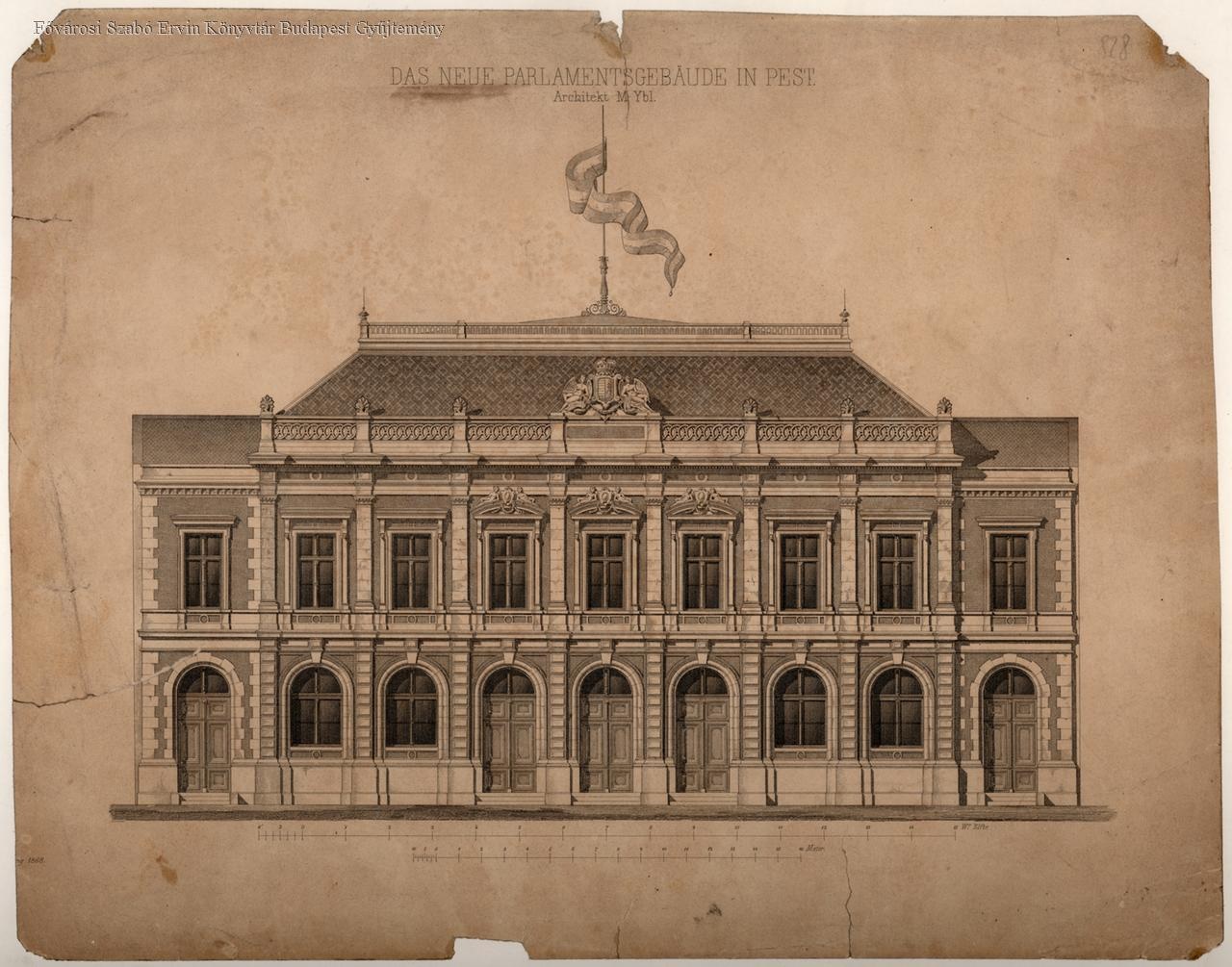
The temporary building was designed by Miklós Ybl (Photo: FSZEK, Budapest Collection)
The papers also revealed that the planned date for the inauguration was 9 December 1865, which would be short even today, as only 3 months were set aside for construction. They were in such a hurry with the works that they did not even wait for a building permit. Fast construction required a lot of workers, so 800 people worked continuously on the site.
The area of the National Museum was not yet built up at that time, the streets were unpaved, and had no sewers, on 16 September 1865, Fővárosi Lapok wrote about the neighbourhood of the new, temporary Parliament:
“A stark contrast to the ugly little house next door, which the ground has already absorbed so much that its wooden shingles will hit the pavement tomorrow. However, this is only an eyesore, and that is why we are against it. This small wooden shingle building is a factory that emits smoke from all sides, threatening the parliament with greater or lesser trouble. Among other things, if it stays, it will always blow smoke towards parliament, especially if the wind turns towards the hall.”
In early November, newspaper readers were told that the walls were up and on 11 November, they a topping-out ceremony was held.
Of course, not everything went smoothly: the windows of the palace were broken by Hungarian experts protesting that Ybl had worked with more experienced Austrian craftsmen. Not everyone liked the plan either: the famous writer and representative Kálmán Mikszáth, for example, outright hated it, he was not satisfied with the construction either and he later complained that the roof leaked constantly.
The building was completed by 9 December 1865, but it was still unsuitable for what it was intended for, as the walls had not yet dried, and the acoustics of the assembly hall were horrible. Therefore, although the National Assembly was opened on 14 December in Buda Castle, the temporary building was not used, the representatives met in the main hall of the National Museum.
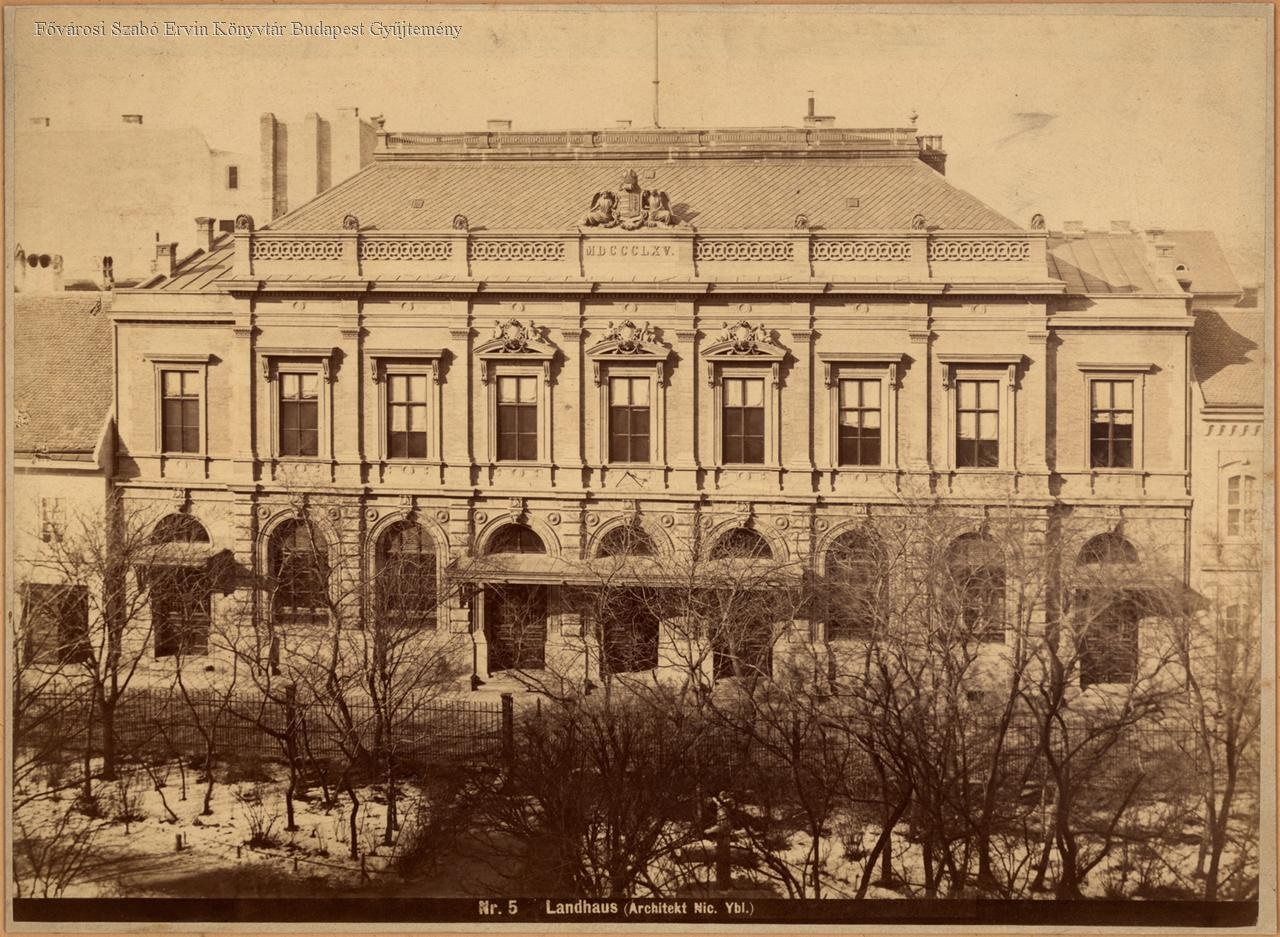
The completed building photographed by György Klösz, the garden of the National Museum seen in the foreground (Photo: FSZEK, Budapest Collection)
Franz Joseph (Ferenc József) visited the temporary Parliament on 17 December, and on the same day, he honoured Miklós Ybl with the Order of Franz Joseph and donated 1,000 Forints to the workers – Pesti Hírlap reported in its 20 December 1865 issue.
The House of Representatives moved in on 14 April 1866, 155 years ago, after a minor remodelling of the main hall and after the paint had dried. On 15 April 1866, the newspaper Sürgöny reported on the event:
“Today is the first sitting in the new Parliament and the audience showed great interest in its solemn simple opening without any ceremony; the street of the building was already very crowded half an hour before the opening. Audiences of all orders and classes were represented in the large and spacious galleries, which were quite full, except for those reserved for outsiders.”
Much was still missing when it opened, and greater or lesser alterations were needed later, for example, tap water was only connected in 1870.
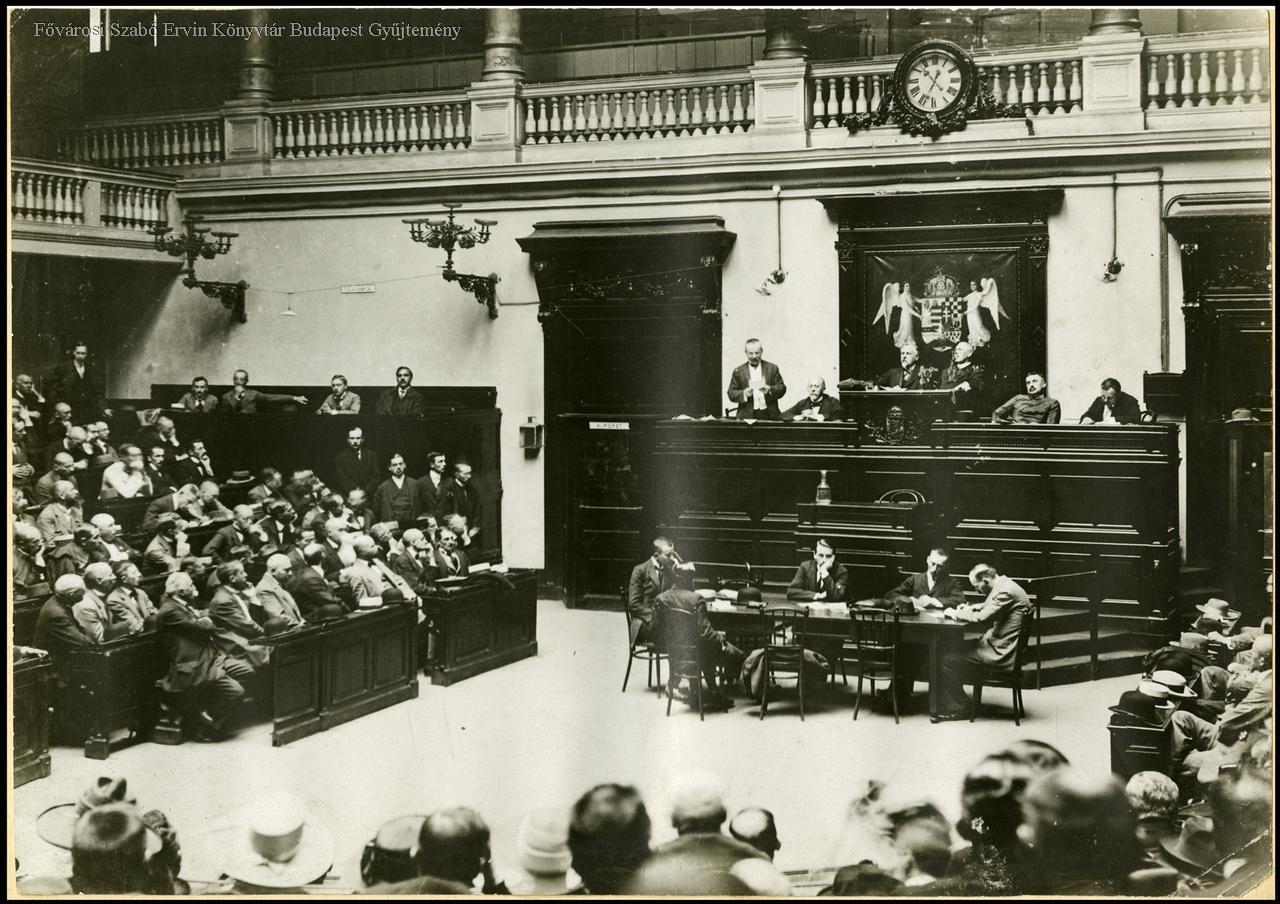
The assembly hall of the Former House of Representatives on Bródy Sándor Street in the 1910s, on the occasion of a teacher's conference (Photo: FSZEK Budapest Collection)
The House of Representatives functioned in this parliamentary building, which was intended to be temporary, for almost four decades, until the new, enormous Parliament Building on the Danube bank, designed by Imre Steindl, was completed in 1902. This is where the Austro-Hungarian Compromise and many laws of the dual monarchy were made.
The building, after the parliament moved out, was mainly used as a conference room, but it also held fairs and sporting events.
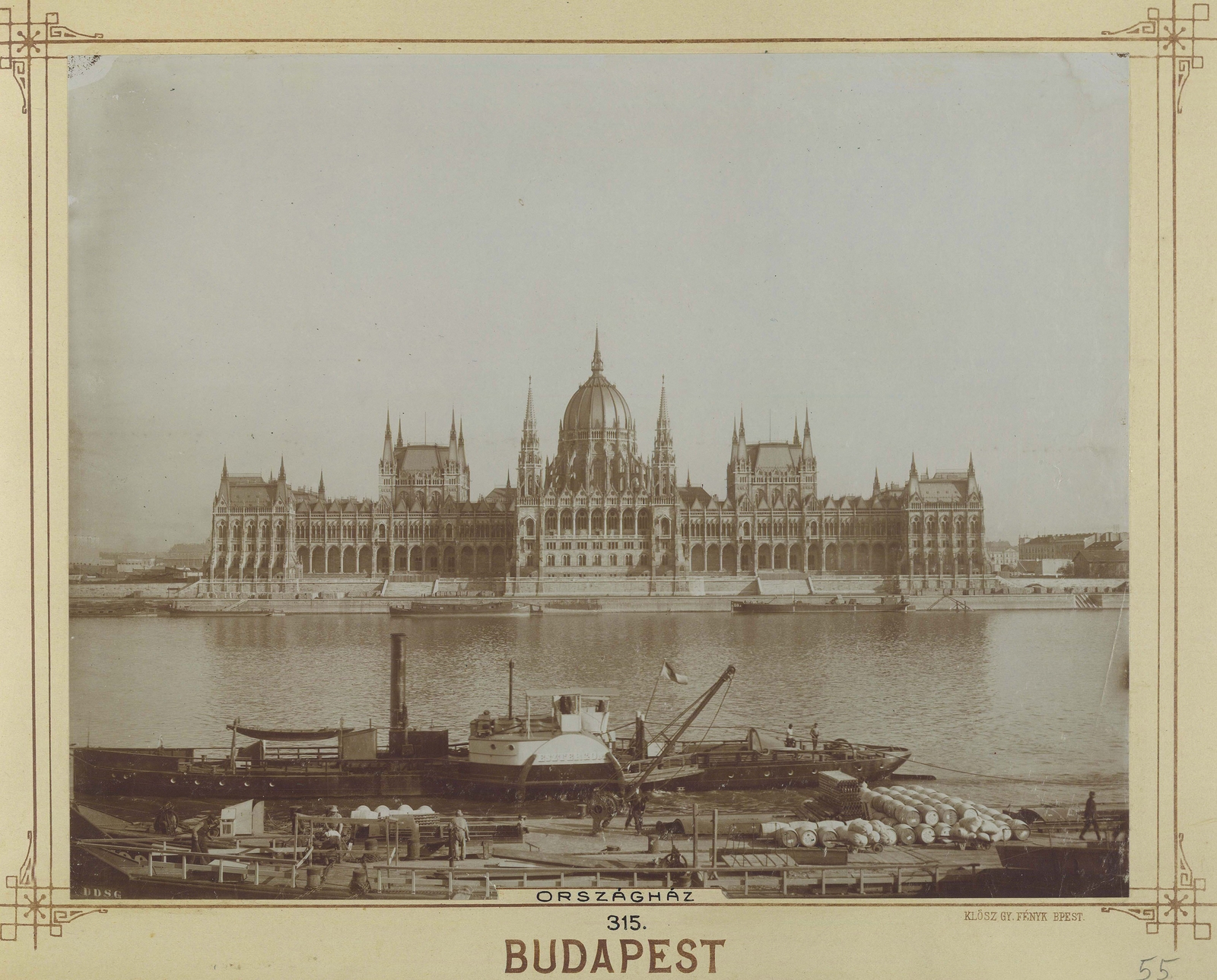
The Parliament Building on the banks of the Danube was completed after 20 years, after which the House of Representatives also moved from Bródy Sándor Street (Photo: Fortepan/Budapest Archives. Reference No.: HU.BFL.XV.19.d.1.08.106)
Even though the plans were completed in one month and the house in 3 months, the building that is now home to the Italian Cultural Institute is fascinating. Miklós Ybl's well-proportioned plans were built by contemporary experts in good quality, and the quickly constructed former Parliament is still an ornament of Budapest.
Cover photo: The former house of representatives at 8 Bródy Sándor Street in 1870 photographers by György Klösz (Forrás: FSZEK Budapest Gyűjtemény)

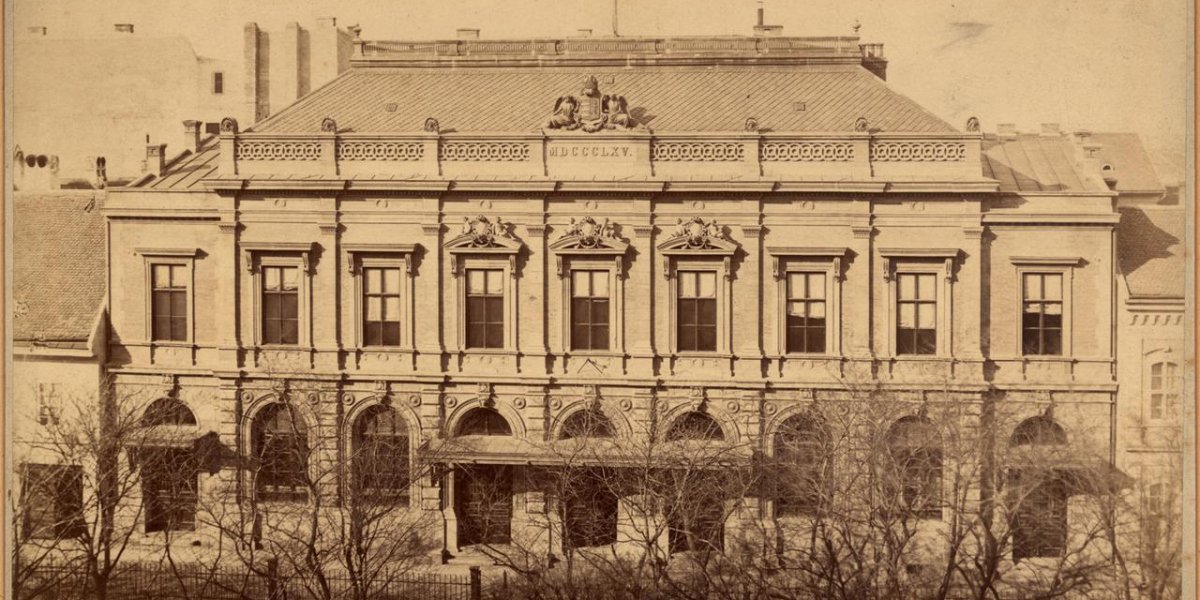


































Hozzászólások
Log in or register to comment!
Login Registration